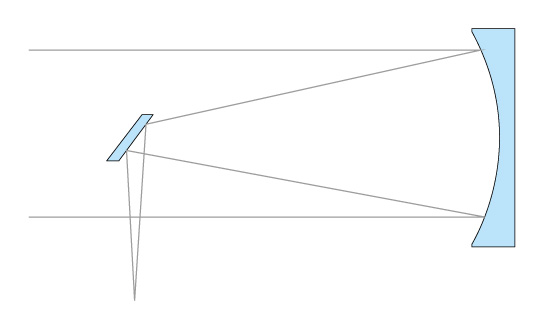Glossary | Telescopes | Optics | Type of build | Newton
The Newtonian Reflector, named after Isaac Newton, is the absolute classic reflector telescope.
The main mirror, which collects light and reflects it, is located at the lower end of the tube. The smaller secondary mirror is located in the top section. It deflects the light by 90°. The focuser, in which one can deploy an eyepiece or camera in order to focus the image, is also located here.
The advantage of this system is that there are no lenses involved, and therefore no chromatic aberration arises. In addition, this design offers the largest aperture for the money.
This is how the Newtonian telescope is constructed

Light enters at the upper end into the tube. At the lower end there is a main mirror, which can be either spherical or parabolic in shape. The mirror reflects the light back. So that the focal point of the mirror is not in front of the tube opening (and therefore obscured by your head when observing), a secondary mirror is located in the top section. This is a plane mirror which deflects the light by 90° and directs it to one side. Then there is the focuser in which you can insert an eyepiece for observing. In order to focus, that is to get the sharpest possible image, turn the focus wheel on the focuser slightly in either direction.
